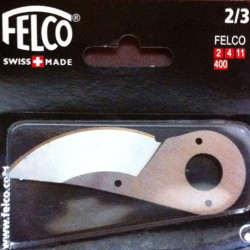Seasonal Rose Care Calendar
A quick guide for rose care.
DISCLAIMER: Please note that this is not to be used as a complete guide. The following information is a general rose care guide only. Due to Australia’s vast climatic variations, seasonal tasks may vary to the following list. For specific information we advise contacting your local rose societies.
WINTER
- Plant your bare root rose.
- Planting is best done during winter, this is when your bare root roses will be delivered.
- View our bare root rose planting guide for more information, click here.
- Transplant established roses.
- If you need to move or repot any roses, winter is the best time to do so.
- For roses growing permanently in large pots, ensure you repot every 2-3 years into fresh potting mix.
- View our rose transplanting guide for more information, click here.
- Prune established roses.
- Pruning is best done mid-late winter. If you live in an area that receives frosts, wait until the last frost has passed. Don’t forget to spray with Lime Sulphur after pruning.
- View our rose pruning guide for more information, click here.
- Check ties and stakes.
- Ensure ties are secure and not too tight around stems on climbing varieties and standard roses.
- Ensure stakes supporting standard roses are still stable.
- Replace with fresh ties and stakes where necessary.
- Water frequently.
- This is vital for newly planted bare root roses. Ensure you are watering newly planted roses at least 2 times a week, regardless of the weather unless in Flood conditions.
- View our rose watering guide for more information, click here.
- Mulch.
- Ensure you mulch any rose beds before spring to keep the moisture in the soil for as long as possible.
- View our rose mulching guide for more information, click here.
SPRING
- Enjoy watching your roses burst into life!
- Fertilise your roses approximately mid Spring.
- Apply once the roses have produced a significant amount of foliage and have produced the first blooms.
- View our fertilising roses guide for more information, click here.
- Water frequently.
- This is very important as water encourages strong growth formation.
- Water 2-3 times a week with 10L each plant. Water regardless of the weather.
- View our rose watering guide for more information, click here.
- Spray regularly.
- Pests such as aphids and fungal diseases such as powdery mildew and black spot are common in spring.
- Spray regularly to prevent pests or diseases rather than treating them after they have become present on your plants.
- If there are pests present on your plants, spray at first sign and perform a follow up spray a few days later.
- Remember to always use ecofriendly or organic sprays where possible. There are plenty on the market and many home remedies that have been proven to work.
- Dead head.
- Dead heading is the process of removing spent flowers. Old flowers left on the bush will begin to turn into hips and seeds, taking up most of the plant’s energy. The removal of spent flowers encourages more blooms to grow, maximising flower production. Snap or cut off the flower where the first leaflets are found.
- Fertilise your roses approximately mid-Summer.
SUMMER
- View our fertilising roses guide for more information, click here.
- Water frequently.
- As summer is often a very dry, hot season across Australia, watering your roses correctly and frequently is vital to keeping your roses alive and healthy through the tough conditions.
- This is especially important for potted roses and roses planted in spring.
- View our rose watering guide for more information, click here.
- Spray regularly.
- Pests such as spider mite are very common in hot dry weather.
- Spray regularly to prevent pests or diseases rather than treating them after they have become present on your plants.
- If there are pests are present on your plants, spray at first sign and perform a follow up spray a few days later.
- Remember to always use ecofriendly or organic sprays where possible. There are plenty on the market and many home remedies that have been proven to work.
- Dead head.
- Dead heading is the process of removing spent flowers. Old flowers left on the bush will begin to turn into hips and seeds, taking up most of the plant’s energy. The removal of spent flowers encourages more blooms to grow, maximising flower production. Snap or cut off the flower where the first leaflets are found.
- Prune once flowering roses, such as Albertine, banksia roses and some heritage roses.
- Continue to tie up and train climbing varieties. Remember to keep the canes as horizontal as possible to encourage flower production.
- Cut back any die back and spindly growth.
- Top up garden beds with mulch where necessary.
- View our rose mulching guide for more information, click here.
- Visit Treloar Roses Display Garden.
- We encourage visitors to our farm to be inspired by the magnificent display garden which showcases over 200 rose varieties. When visiting us, The garden looks its best from mid-November to April.
- View more information on visiting us and our display garden, click here.
AUTUMN
- Plan and prepare for new rose plantings in winter
- Order bare root roses
- View our guide on how to select the right rose for your garden, click here.
- Soil preparation
- View our soil preparation guide for more information, click here.
- Fertilise your roses in early Autumn. Do not fertilise in late Autumn.
- View our fertilising roses guide for more information, click here.
- Water frequently.
- View our rose watering guide for more information, click here.
- Spray regularly.
- Due to the added moisture in the air during Autumn, fungal diseases such as black spot and mildew can become present.
- Spray regularly to prevent pests or diseases rather than treating them after they have become present on your plants.
- If there are pests are present on your plants, spray at first sign and perform a follow up spray a few days later.
- Remember to always use ecofriendly or organic sprays where possible. There are plenty on the market and many home remedies that have been proven to work.
- Continue to tie up and train climbing varieties. Remember to keep the canes as horizontal as possible to encourage flower production.
- Cut back any die back and spindly growth.





